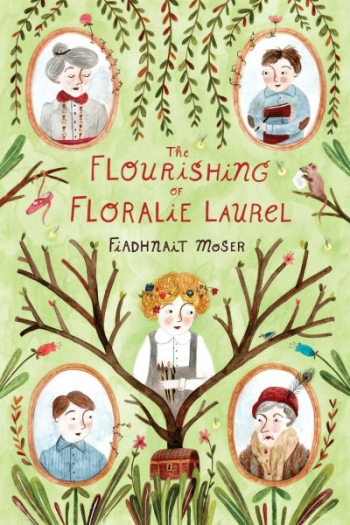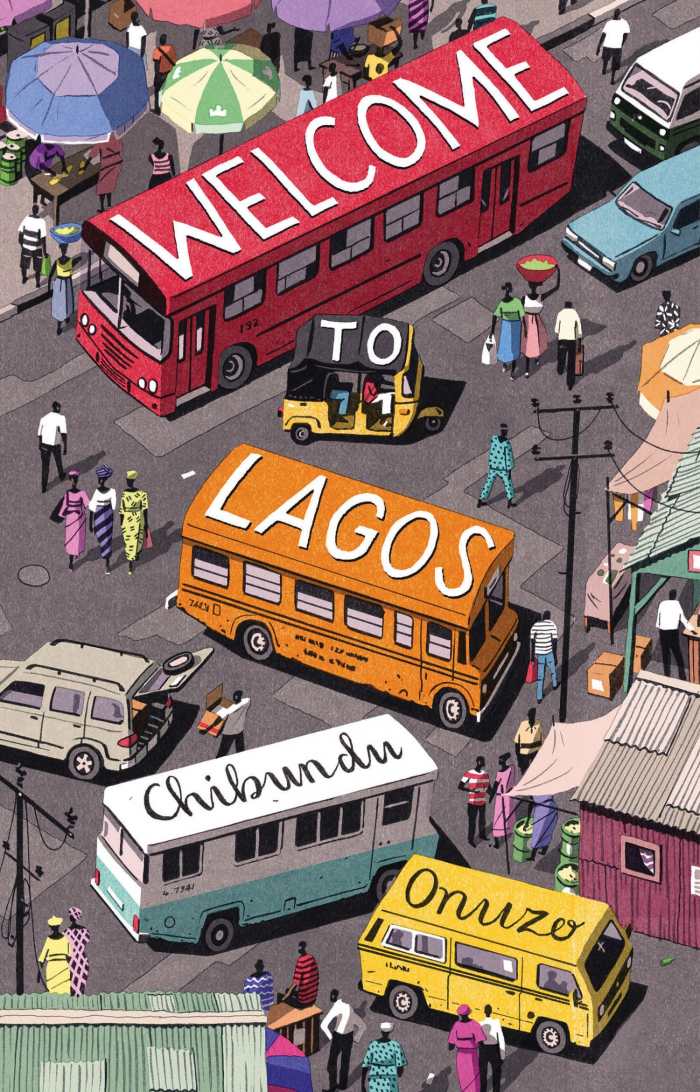Book of the Day Roundup April 30-May 4

Strawberry Fields

Hilary Plum
Fence Books
Softcover $15.99 (224pp)
978-1-944380-03-8
Buy: Local Bookstore (Bookshop), Amazon
In Hilary Plum’s Strawberry Fields, myriad memorable protagonists report on tragedies from hotspots around the world with vivid language. Though many of the point-of-view chapters are only loosely connected, they add up to a bleak but well-rendered picture of global destruction.
The novel moves through many of the major crises of the early twenty-first century. Locations include Iraq during the US invasion, New Orleans after Hurricane Katrina, and Pakistan under constant drone warfare.
The main protagonists are a journalist and a detective investigating the murder of five Iraq War veterans, but their perspectives alternate with plenty of others. By design, the novel descends into a morass of painful situations and helpless observers. Rather than merely investigate the murders, the book uses them as a jumping-off point to explore other ramifications of the same foreign policy that was their root cause.
Few novels feature so many works of journalism cited in the credits. For research, Plum used real reporters’ impressions of the crises that her fictional equivalents navigate. Her narrators are outside observers; her lyrical first-person writing is plausible as their work.
One heartbreaking chapter tells of a neglected zoo, the horrible things done there, and the extreme measures required to keep the few starving animals left alive. Another takes the form of a letter to a dead journalist’s wife, describing his accidental death from falling into an electrified waterway. Others deal with the shady machinations of a contracting mercenary force or focus on a journalist in a Mexican jail trying to send a message to the outside world.
The subject matter is universally dark, but also very realistic, making Strawberry Fields work as a thinly fictionalized version of global chaos.
JEFF FLEISCHER (April 27, 2018)
The Flourishing of Floralie Laurel

Fiadhnait Moser
Yellow Jacket
Hardcover $16.99 (336pp)
978-1-4998-0668-7
Buy: Local Bookstore (Bookshop), Amazon
Fiadhnait Moser’s coming-of-age novel, The Flourishing of Floralie Laurel, follows its heroine as she rounds the first corner of adolescence and finds very adult problems waiting. As Floralie questions who her family members are—as caretakers and as people—she’s confronted with the complex and often flawed nature of those whom she loves and craves love from in return.
It’s 1927, and Floralie is too old to keep roaming the streets of Whitterly End. Kicked out of her boarding school, she’s back with her older brother, but not for long.
Grandmother wants to make Floralie into the perfect wife, but Floralie knows she’s a painter. Desperate to outmaneuver Grandmother, Floralie enlists a street urchin and a sympathetic librarian to help her decode her mother’s secrets. In search of a rare floriography, they set out for Floralie’s childhood home in Giverny, France, where Floralie is determined to discover what happened to her mother, and also to return to a time when her imagination wasn’t “the undoing of her own heart.”
Innocence is edged with darkness as Floralie’s imagination helps her escape very real things: her father’s death, her mother’s unexplained absence, and sudden poverty, to name a few. Family secrets have festered into a silence, and she takes responsibility for understanding family rifts. Ultimately, Floralie deals with the complex anguish of loving a mentally ill parent, and the ways they can fracture a family and feed its dysfunction.
There’s freshness to this novel, and also room to grow. Floralie is a visual thinker who understands the world in pictures. Heavy imagery creates a kind of linguistic impressionism; clarity is sometimes sacrificed. While self-expression is encouraged, and rightly so, it coexists with stereotypes about artistic temperaments and mental instability.
Fantastical and poetic, The Flourishing of Floralie Laurel uses evocative imagery to explicate Floralie’s experience. On the cusp of adolescence, Floralie peers into adulthood’s penumbra and discovers the seeds from which her inner strength grows.
LETITIA MONTGOMERY-RODGERS (April 27, 2018)
Welcome to Lagos

Chibundu Onuzo
Catapult
Hardcover $26.00 (304pp)
978-1-936787-80-7
Buy: Amazon
Welcome to Lagos, Chibundu Onuzo’s US debut, follows an unlikely group of Nigerians bound together by circumstance. As their lives converge, five travelers from the Niger Delta are thrown together with two of Nigeria’s privileged class; high class or low, all of them must survive Lagos itself.
In the Niger Delta, Chike Ameobi and Yẹmi Ọkẹ, two disaffected soldiers, desert their post. Fleeing, they pick up the human detritus of their actions: Fineboy, a young rebel soldier, and Isoken, the teenage orphan he may have tried to rape. Spotted as deserters, they’re forced to take these two witnesses to Lagos, too.
A fellow traveler, Oma, helps them find a hotel. She stays too. They’ve arrived, but suddenly they’re five. Meanwhile, the tides are shifting among Lagos’s elite. While the minister of education, Chief Sandayọ, decides he won’t go quietly if he’s replaced, the Nigerian Journal‘s editor in chief, Ahmed Bakare, wants to combat the country’s stagnant corruption. Soon, Lagos will bring them together for a moment that subverts and confirms everything they’ve ever known.
Lagos as a framing device illustrates the shifting, often tenuous connections between the public and private lives of Nigeria’s citizenry, and the specificity of Onuzo’s details fully embodies each character. Both concordance and witness to the story of its people, from the wealthy elite to those disappearing into the anonymous darkness found under its bridges, Lagos is full of
[big] cars, models you would never see anywhere else in Nigeria. Large houses. Money everywhere. And under these fantastic stories of riches, always a layer of unease: of daylight robberies and mysterious disappearances.
Threaded with a buoyant despair, Welcome to Lagos is a “rationale to explain a world that never got better. Despite one’s best efforts, despite one’s highest hopes: the world did not change.”
LETITIA MONTGOMERY-RODGERS (April 27, 2018)
The Right to Be Cold
One Woman’s Fight to Protect the Arctic and Save the Planet from Climate Change

Sheila Watt-Cloutier
Bill McKibben, contributor
University of Minnesota Press
Softcover $22.95 (368pp)
978-1-5179-0497-5
Buy: Local Bookstore (Bookshop), Amazon
Sheila Watt-Cloutier grew up in the Arctic. As a native Inuk, she witnessed numerous environmental dangers, not the least of which was climate change. In a candid, heartfelt memoir that concentrates on her lifelong activism, Watt-Cloutier shares stories about her upbringing and her development into an adult whose passion is the protection of the indigenous Inuit.
Prior to her landmark work on climate change, Watt-Cloutier became president of the Inuit Circumpolar Council (ICC), an organization dedicated to protecting and promoting the Inuit culture and way of life. This led to her involvement in a campaign to rid the Arctic of a group of contaminants known as persistent organic pollutants, or POPs. The author writes authoritatively about this challenge, but it is her passion that really shines through the text; POPs are toxins that directly affected the Inuit food supply, so “the threat to our country food struck me at a deeply visceral, emotional level,” she notes. Her efforts, recounted in an engaging narrative, directly led to a major if imperfect multicountry agreement that helped to contain most but not all of the POPs.
An even graver challenge than POPs facing the Arctic, however, was climate change. Watt-Cloutier describes in somewhat disturbing detail how her homeland was affected: “Everyone in the Arctic communities could see that the ice melted sooner and returned later … but perhaps most shocking of all was that the very ground beneath our feet was no longer solid.” These dramatic visual images bring the harsh impact of climate change to life.
The Right to Be Cold takes its title from a journalist, who said to Watt-Cloutier during an interview, “You are fighting for the right to be cold.” This also became the slogan for an historic struggle that captured international attention. In documenting her fight, Sheila Watt-Cloutier is giving all of humanity a much-needed wake-up call.
BARRY SILVERSTEIN (April 27, 2018)
Sodom Road Exit

Amber Dawn
Arsenal Pulp Press
Softcover $18.95 (404pp)
978-1-55152-716-1
Buy: Local Bookstore (Bookshop), Amazon
Amber Dawn’s Sodom Road Exit combines supernatural erotic tension with the power of love, community, and acceptance, all set against former funhouse glory.
The past meets the present with a searing intensity against the backdrop of a bankrupt Canadian amusement park. Formerly a longtime Lake Erie tourist spot, Crystal Beach has closed, leaving behind a bleaker landscape, an economic void, and a restless and fiery ghost named Etta.
At the center of the novel is Starla Mia Martin. She’s in her early twenties, cynical yet poetic, gay but not fully out. In the summer of 1990, Starla finds herself overwhelmed with debt and forced to move back in with her free-spirited mother. Despite Starla’s history of being sexually abused and her tendency to see life’s darker side, she has a strong will and her own unique charisma.
When Starla takes a job at a campground area near Crystal Beach’s shuttered remains, her magnetism and energy help her to bond with the local residents. That same life force appeals to the ghost of Etta to the point of spiritual and sexual possession. Like Starla, Etta was once an attractive and intense gay young woman. A “professional screamer” on Crystal Beach’s Cyclone roller coaster, Etta thrilled the crowd with her excited cries. Etta also worked as a prostitute before her untimely death during World War II, turning tricks for men yet feeling true desire for women.
Alternating between 1990s life and recollections of Crystal Beach in its heyday, Sodom Road Exit creates two compelling fictional worlds, along with a supernatural erotic tension as Etta’s powers of seduction threaten Starla’s first significant lesbian relationship. With vivid settings and quirky, memorable characters, the novel pairs the edgy intrigue of a ghost story with the grounded warmth of people coming together to love, support, and accept each other.
MEG NOLA (March 27, 2018)
Hannah Hohman
